|
Books Should Be Free Loyal Books Free Public Domain Audiobooks & eBook Downloads |
|
|
Books Should Be Free Loyal Books Free Public Domain Audiobooks & eBook Downloads |
|
Books of Memoirs |
|---|
|
Book type:
Sort by:
View by:
|
By: Franz Liszt (1811-1886) | |
|---|---|
 Life of Chopin
Life of Chopin
Chopin was a romantic era Polish composer. This work is a memoir by Liszt who knew Chopin both as man and artist. This memoir gives a unique understanding to the psychological character of the compositions of Chopin. It also offers Liszt's insight into some of Chopin's polonaises, especially the grand polonaise in F sharp minor. Liszt explains the strange emotion "ZAL" which is inclosed in his compositions. Then, presents a brief sketch on the lives of other great people in Chopin's circle. After that, Liszt discusses Chopin's fame and early life. Finally, Liszt gives a detailed account on Chopin's sufferings due to ill health and the unfortunate departure of the great composer. | |
By: Franz von Dingelstedt (1814-1881) | |
|---|---|
 John Gutenberg, First Master Printer: His Acts and Most Remarkable Discourses and his Death
John Gutenberg, First Master Printer: His Acts and Most Remarkable Discourses and his Death
This is a brief sketch of the last years of the life of Johannes (John) Gutenberg, the man who invented the movable letter press. We join him in Mayence, where he lives in poverty. We get to know his enemies and his friends, and some information about why he isn't the rich man we'd expect him to be. This book was prepared and completed within two days by the volunteers at Distributed Proofreaders to mark their 15th anniversary with the 50,000th published book at Project Gutenberg. ( Claudia Salto) | |
By: Frederick Douglass (1818-1895) | |
|---|---|
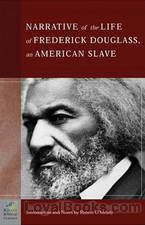 Narrative of the Life of Frederick Douglass
Narrative of the Life of Frederick Douglass
Frederick Douglass was born into slavery on a Maryland plantation. He faced hardship as a child, but later encountered owners who were relatively liberal and allowed him to learn to read, write and be in contact with freed slaves. At the age of 20, he escaped from the plantation and made his way to New York. Though he remained a fugitive, he married and changed his name to avoid being caught. He continued his education and became involved in the Abolitionist Movement. He began touring the country, speaking passionately about the unjust, cruel and inhuman practice of slavery... | |
By: Frederick Hoffman | |
|---|---|
 A Sailor of King George
A Sailor of King George
| |
By: Frederick Marryat (1792-1848) | |
|---|---|
 Jacob Faithful
Jacob Faithful
Rebelling against the career chosen for him by his wealthy family, Frederic Marryat joined the Royal Navy in 1806 at the age of 14. He first served as a midshipman in the 38-gun frigate "HMS Imperieuse" commanded by Lord Cochran, 10th Earl of Dundonald whose real life exploits were used by Marryat in his fiction and which formed the basis for other famous fictional characters like Horatio Hornblower and Jack Aubrey. Having survived more than 50 sea battles and attained the rank of Post Captain, he resigned from the Navy and devoted the rest of his life to writing, drawing a good deal on his distinguished career in the Navy and is now considered the Father of Modern Nautical Fiction... | |
By: Frederick Treves (1853-1923) | |
|---|---|
 Elephant Man and other reminiscences
Elephant Man and other reminiscences
In 1884, Professor Treves saw Joseph Merrick in a shop across the road from the London Hospital. Being also a teacher at the University, he brought Merrick to the London Hospital as a teaching case, and Merrick lived there until his death in April 1890. This book of "reminiscences" includes the story of the "Elephant Man" as well as other interesting cases from Sir Treves' practice as a doctor. | |
By: Gen. George A. Custer (1839-1876) | |
|---|---|
 My Life on the Plains
My Life on the Plains
George Armstrong Custer (December 5, 1839 – June 25, 1876), one of the most mythologized figures in American history, was an United States Army officer and cavalry commander in the American Civil War and the Indian Wars. He eventually met his fate in the battle of Little Big Horn in one of the most notable defeats of American armed forces.My Life on the Plains is an autobiographical first-hand account of the Indian Wars of 1867-1869, detailing the winter campaign of 1868 in which Custer led the 7th US cavalry against the Cheyenne Indians... | |
By: Geoffrey H. Malins (1887-1943) | |
|---|---|
 How I Filmed the War
How I Filmed the War
An account of World War I and the experience of filming it by an early cinematographer (and, after the war, successful director) who was there. | |
By: George B. Grinnell | |
|---|---|
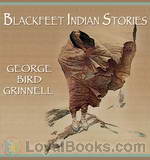 Blackfeet Indian Stories
Blackfeet Indian Stories
The Blackfeet were hunters, travelling from place to place on foot. They used implements of stone, wood, or bone, wore clothing made of skins, and lived in tents covered by hides. Dogs, their only tame animals, were used as beasts of burden to carry small packs and drag light loads. The stories here told come down to us from very ancient times. Grandfathers have told them to their grandchildren, and these again to their grandchildren, and so from mouth to mouth, through many generations, they have reached our time. (Sibella Denton) | |
By: George Bethune English (1787-1828) | |
|---|---|
 A Narrative of the Expedition to Dongola and Sennaar
A Narrative of the Expedition to Dongola and Sennaar
As a second lieutenant in the United States Marine Corps during the War of 1812 assigned to Marine Corps headquarters, English sailed to the Mediterranean, and was among the first citizens of the United States known to have visited Egypt. Shortly after arriving in Egypt he resigned his commission, converted to Islam and joined Isma'il Pasha in an expedition up the Nile River against Sennar in 1820, winning distinction as an officer of artillery. He published his Narrative of the Expedition to Dongola and Sennaar (London 1822) regarding his exploits. (Introduction adapted by obform from Wikipedia) | |
By: George Borrow (1803-1881) | |
|---|---|
 Wild Wales
Wild Wales
Wild Wales: Its People, Language and Scenery is a travel book by the English Victorian gentleman writer George Borrow (1803–1881), first published in 1862 and now a classic travel text on Wales and the Welsh. The book recounts Borrow's experiences, insights and personal encounters whilst touring Wales alone on foot after a family holiday in Llangollen in 1854. Although contemporary critics dismissed its whimsical tone, it quickly became popular with readers as a travel book and more importantly as a very lively account of the literary, social and geographical history of Wales... | |
By: George Dunderdale (1822-1903) | |
|---|---|
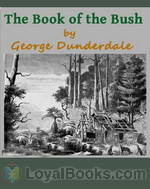 The Book of the Bush
The Book of the Bush
While the world was young, nations could be founded peaceably. There was plenty of unoccupied country, and when two neighbouring patriarchs found their flocks were becoming too numerous for the pasture, one said to the other: "Let there be no quarrel, I pray, between thee and me; the whole earth is between us, and the land is watered as the garden of Paradise. If thou wilt go to the east, I will go to the west; or if thou wilt go to the west, I will go to the east." So they parted in peace.(excerpt from book) | |
By: George Eggleston (1839-1911) | |
|---|---|
 Rebel's Recollections
Rebel's Recollections
George Cary Eggleston's Civil War memoir begins with a separate essay on the living conditions and political opinions of Virginia’s citizenry before secession. The body of the work contains vivid descriptions and accounts of the men and women of the South during the time of the Confederacy. Eggleston praises its war heroes, Robert E. Lee, Stonewall Jackson, and Jeb Stuart, but is highly critical of Jefferson Davis and of his government’s inefficiencies, red-tape, and favoritism. The book concludes with the war's end and a tribute to the character of the newly freed slaves... | |
By: George Gissing (1857-1903) | |
|---|---|
 Private Papers of Henry Ryecroft
Private Papers of Henry Ryecroft
This novel consists of selections from the diary of an author, starting soon after his retirement and continuing until just before his death. There is very little in the way of plot, but a great deal of quiet musing about art, nature, society, and the things that make life worth living. Although this is a work of fiction, there are clear parallels between the narrator's life and Gissing's own life. This leads many commenters to view it as semi-autobiographical. | |
By: George Payne Rainsford James (1799-1860) | |
|---|---|
 Agnes Sorel
Agnes Sorel
The Hundred Years' War: a series of conflicts waged from 1337 to 1453 by the House of Plantagenet, rulers of the Kingdom of England, against the House of Valois, rulers of the Kingdom of France, over the succession to the French throne. It was a time of intrigue, plot, murder and romance. Agnes Sorel, aged 20, became the favorite mistress of the King of France, wielding much influence over him and earning many enemies. Her untimely death at the age of 28, just days after bearing him a fourth child, was blamed on dysentery... | |
 Arabella Stuart
Arabella Stuart
Lady Arabella Stuart was an English noblewoman at the beginning of the seventeenth century. At one time considered to be a possible successor to Elizabeth I, the crown eventually went to her cousin, the tyrannical James I. Our story begins in 1603, shortly after his ascension to the throne. Apparently she was happy at the change in fortune, although relations with her kinsman deteriorated after her clandestine marriage, which was incorrectly seen as a power struggle. Even her closest friends could not protect her. In James's usual fashion, this is a colorful fictional account of her life. | |
By: George Savile Marquis of Halifax (1633-1695) | |
|---|---|
 Complete Works of George Savile, first Marquess of Halifax, with an Introduction by Walter Alexander Raleigh
Complete Works of George Savile, first Marquess of Halifax, with an Introduction by Walter Alexander Raleigh
George Savile, 1st Marquess of Halifax (11 November 1633 – 5 April 1695) was an English statesman, writer, and politician who sat in the House of Commons in 1660, and in the House of Lords after he was raised to the peerage in 1668. He's noted in history for his views on Charles II among others. This compilation covers a wide range of his views which are particularly telling, coming, as they do, from a man who was singularly positioned among the powers of the time, to make them. Prepare yourself for a journey into antiquated English speech. | |
By: George Washburn Smalley (1833-1916) | |
|---|---|
 Anglo-American Memories
Anglo-American Memories
“These Memories [1911] were written in the first instance for Americans and have appeared week by week each Sunday in the New York Tribune…. they are mainly concerned with men of exceptional mark and position in America and Europe whom I have met, and with events of which I had some personal knowledge. There is no attempt at a consecutive story.” Smalley was an American journalist born in Massachusetts in 1833; he wrote from and about many places in America and Europe. - Summary by Book Preface and David Wales | |
By: George William Foote (1850-1915) | |
|---|---|
 Prisoner for Blasphemy
Prisoner for Blasphemy
George William Foote, a British secularist, was convicted and imprisoned on the charge of blasphemy after founding "The Freethinker", a magazine that, despite the best efforts of the 19th Century British judicial system, is still going strong. "Prisoner for Blasphemy" is a memoir of his several trials and final imprisonment in Holloway Gaol. Although Foote's was the last prominent blasphemy case in England, his hope that the blasphemy law would soon be abolished was not to be realised until almost a century after his death, in 2008. | |
By: George-Günther Freiherr von Forstner (1882-1940) | |
|---|---|
 The Journal of Submarine Commander Von Forstner
The Journal of Submarine Commander Von Forstner
The Journal of Submarine Commander Von Forstner is a graphic account of WWI submarine warfare. Forstner was the commander of German U-boat U-28. His journal, first published 1916, gives a gritty picture of daily life inside a submarine and details several torpedo attacks on Allied shipping. The 1917 translation of Forstner’s journal into English was unquestionably intended to bolster the Allied war effort. In the foreword, the translator states: “Nothing at the present day has aroused such fear as this invisible enemy, nor has anything outraged the civilized world like the tragedies caused by the German submarines... | |
By: Geraldine Edith Mitton (1868-1955) | |
|---|---|
 Bachelor Girl in Burma
Bachelor Girl in Burma
Miss Mitton was an unusual English woman of her time. As a published author, this unmarried woman in her early 30s recorded her visit to Burma at the turn of the 20th century. Her language is picturesque, and her attitude toward the natives of this country is typical of her era. Burma of the early 1900s was, and still is, a little known and underappreciated destination for those who love to wander the world. Anyone interested in Edwardian travel, attitudes, and women's issues during the Edwardian colonial period will enjoy this travelogue. | |
By: Gertrude Atherton (1857-1948) | |
|---|---|
 Rezanov
Rezanov
This novel by the prolific Californian author Gertrude Horn Atherton is based on the real life story of Nikolai Rezanov, a man who, in 1806, pushed for the Russian colonization of Alaska and California. "Not twenty pages have you turned before you know this Rezanov, privy councilor, grand chamberlain, plenipotentiary of the Russo-American company, imperial inspector of the extreme eastern and northwestern dominions of his imperial majesty Alexander the First, emperor of Russia—all this and more, a man... | |
By: Giacomo Casanova (1725-1798) | |
|---|---|
 The Memoirs of Jacques Casanova
The Memoirs of Jacques Casanova
This is the first of five volumes. – Giacomo Casanova (1725 in Venice – 1798 in Dux, Bohemia, now Duchcov, Czech Republic) was a famous Venetian adventurer, writer, and womanizer. He used charm, guile, threats, intimidation, and aggression, when necessary, to conquer women, sometimes leaving behind children or debt. In his autobiography Histoire de ma vie (Story of My Life), regarded as one of the most authentic sources of the customs and norms of European social life during the 18th century, he mentions 122 women with whom he had sex... | |
By: Guy Thornton (1872-1934) | |
|---|---|
 With the Anzacs in Cairo
With the Anzacs in Cairo
Guy Thornton recounts his experiences serving as a military chaplain with the Australian and New Zealand Army Corps while stationed in Egypt during World War I. His writing is opinionated, emotionally vulnerable, and written in very colorful, vivid prose. He recounts both his successes and failures as a pastor. Of particular concern to Thornton, are his soldiers’ interactions with the Wasa'a- the red-light district of Cairo which was popular with the soldiers who often patronized prostitutes. Thornton also expresses his experiences exploring Cairo, his work as a chaplain, and the various social services catering to soldiers. - Summary by Adam Bielka | |
By: Harriet E. Wilson (1825-1900) | |
|---|---|
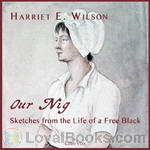 Our Nig, or, Sketches from the Life of a Free Black, In A Two-Story White House
Our Nig, or, Sketches from the Life of a Free Black, In A Two-Story White House
Frado is a colored girl, living in the USA a few years before the Civil War. She is abandoned by her own white mother in the house of the Bellmont's- where she is treated badly. This is a sad book, but Frado's cheerfulness and dignity will make you love her until the end. (Introduction by Stav Nisser) | |
By: Harriet Jacobs (1813-1897) | |
|---|---|
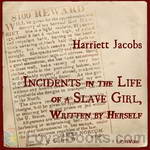 Incidents in the Life of a Slave Girl, Written by Herself
Incidents in the Life of a Slave Girl, Written by Herself
Born in slavery, but being fortunate enough to be owned by a benevolent mistress, her life takes a tragic turn when her parents and her benefactor die. The new heir to the property (and slaves) is a cruel and lewd man who begins to make inappropriate advances to the lovely young slave-girl. In a bid to escape, she becomes entangled in a relationship with a neighboring landowner who promises a better life, and she even has two children. However, things become worse for her when her cruel owner decides to punish her by sending her and her children to a distant cotton plantation to be “broken in... | |
By: Harry A. Franck (1881-1962) | |
|---|---|
 Vagabonding Down The Andes
Vagabonding Down The Andes
Sometime in the latter half of 1911, Harry A. Franck jumped out of a box-car and crossed the Rio Grande, from Laredo. Thus began a journey, often afoot, that Harry estimated would take him 8 months. It ended up occupying four years of his life. The first leg of his Latin American epic is recorded in "Tramping Through Mexico, Guatemala, and Honduras; Being the Random Notes of an Incurable Vagabond" . He then headed south to the Canal Zone, Teddy Roosevelt's grand experiment in socialism, and applied within the Zone police force for a position as a census taker ... | |
By: Hazard Stevens (1842-1918) | |
|---|---|
 First Successful Ascent of Mt. Rainier, 1870
First Successful Ascent of Mt. Rainier, 1870
Hazard Stevens and P.B. Van Trump, aided by the Indian guide Sluiskin, made the first documented successful ascent of Mt. Rainier on August 17, 1870. Hazard's account of the climb was first published in the Atlantic Monthly in 1876 and later reprinted with an introduction by Edmond S. Meany in 1916. Sluiskin tried to dissuade the climbers. "Takhoma” (the Indian name for Mt. Rainier) "was an enchanted mountain, inhabited by an evil spirit, who dwelt in a fiery lake on its summit. No human being could ascend it or even attempt its ascent and survive... | |
By: Helen Gansevoort Edwards Mackay (1876-1961) | |
|---|---|
 Journal Of Small Things
Journal Of Small Things
Brief journal sketches from France during WW1. The author was was American, but went on to spend much of her life in France. - Summary by kathrinee | |
By: Helen Keller (1888-1968) | |
|---|---|
 The Story of My Life
The Story of My Life
An autobiography of Helen Keller published when the author was still in her early 20's. The narrative reveals how her mind developed and matured until she began her studies at Radcliffe College | |
By: Henriette Lucie Dillon, marquise de La Tour du Pin Gouvernet (1770-1853) | |
|---|---|
 Recollections of the Revolution and the Empire
Recollections of the Revolution and the Empire
An aristocratic Frenchwoman's personal record of the dazzling extravagance of the Ancien Régime, of the court of Marie Antoinette, of the Revolution, of her life in exile and of the court of Napoleon Bonaparte. This famous historically valuable memoir, written for her son, ends with Napoleon's return from Elba in 1815. | |
By: Henry Bibb (1815-1854) | |
|---|---|
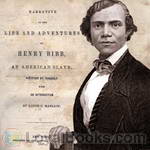 Narrative of the Life and Adventures of Henry Bibb, an American Slave
Narrative of the Life and Adventures of Henry Bibb, an American Slave
Henry Walton Bibb was born a slave. His father was white although his identity was not positively known. Bibb was separated from his mother at a very young age and hired out to other slave owners for most of his childhood. Always yearning for his freedom, he made his first escape from slavery in 1842. He was recaptured and escaped, recaptured and escaped over and over; but he never gave up on his desire to be a man in control of his own destiny. | |